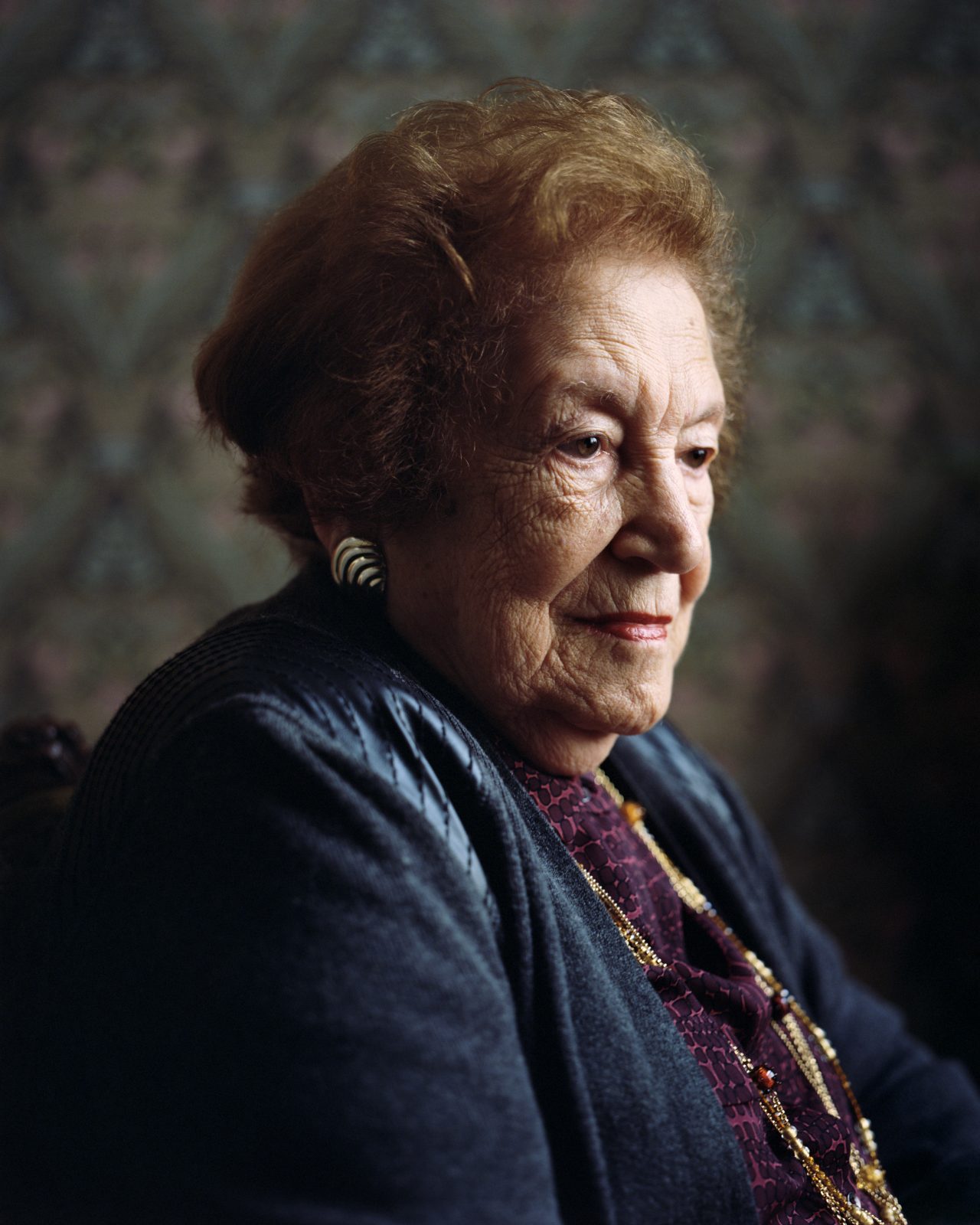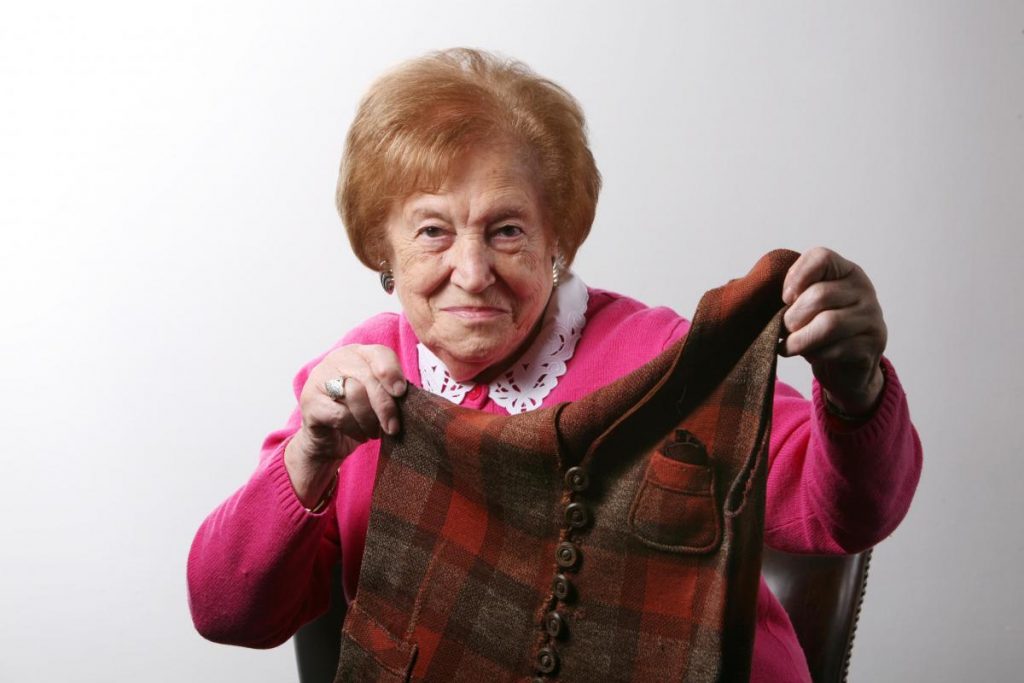
Sabina Miller BEM
Sabina Miller met severely visually impaired illustrator Kimberley Burrows over lunch in central London for HMD 2015.
HMD 2015 – Memory Makers
Sabina Miller met severely visually impaired illustrator Kimberley Burrows over lunch in central London for HMD 2015. Watch a video of Sabina telling her story.
HMD 2011 – Hidden Histories – The Cardigan: Sabina Miller

- this cardigan was given to its owner in 1939
- it was given to its owner by her mum
- the owner of this cardigan is from Poland
- the girl who owned this cardigan was forced from her home and had to live in a ghetto
Sabina shows us her cardigan. It’s quite old fashioned and very well worn and is red and brown checks with buttons down the front. It has three pockets but no sleeves. It doesn’t look like the kind of garment that a lady of Sabina’s age would wear and it seems that it would fit someone much smaller. Sabina is now a great-Grandmother who lives in London. Sabina was born in Warsaw, Poland in 1922 and she tells us that she had ‘a wonderful childhood. We were four children – two brothers, two sisters. It was a loving, beautiful childhood. Our parents played with us in the evening.’
Sabina remembers that her mum bought her the cardigan, along with a skirt in 1939 – she thinks that it may have been for her birthday which is in June. Sabina recalls how much she loved going shopping with her mum. Whilst she still has the cardigan, she no longer has the skirt.
Sabina’s happy childhood came to an end shortly after her mum bought her this outfit. After taking control of Poland in 1939, a year later the Nazis ordered all Jews, including Sabina’s family into a ghetto in Warsaw. The Nazis hated anyone who was different to them, particularly Jewish people, who they wanted to completely remove from Europe. They bought in laws and legislation which restricted the movement of all Jewish people and forced them to wear armbands with a Star of David which would identify them as Jews. The ghettos were small parts of cities where Jews were forced to live in overcrowded and atrocious conditions. Families were forced to live together in one room with other families and food, medicine and clothes were scarce. As Jews were ordered into the ghetto with little notice and they were unable to bring many of their possessions with them, it’s incredible that Sabina’s cardigan survived. Eventually, the Nazis would close the ghettos and they would send the Jewish people to concentration camps were many millions were murdered.
Sadly, Sabina’s family did not survive. Her mum contracted Typhus in the ghetto in 1940, as did Sabina. When Sabina was well enough she had to face up to the fact that she did not know what had happened to her mother. Sabina says ‘when I woke up, I didn’t have a mother anymore. I kept saying she had gone to the provinces to see my grandmother, I did not want to believe she was not there anymore.’
When Sabina holds her cardigan today, she feels sad that she hasn’t got her mum anymore. She also feels ‘a sadness. It’s a feeling of why did all this have to happen’. Sabina miraculously survived the Holocaust by taking on the identity of a number of people after escaping from the ghetto. This cardigan is part of the story of her survival and it tells the Untold Story of Sabina’s relationship with her mum.
Sabina still has this cardigan, and she intends to pass it on to her daughter, even though it’s not wearable, it will become a symbol of the family who did not survive and the person who did. Sabina has told her daughters and granddaughters her story, and when her great grandson is old enough, she will tell him her story too. We’re very fortunate that Sabina has chosen to share her Untold Story with us as part of Holocaust Memorial Day 2011. Along with the things that we can learn, she has a special hope for us whilst we explore her story ‘I want…you to learn what harm war can cause. To ask why we can’t all live in peace – this is very important to me. I would like to ask you to think about what happened and try to live lives so that war could not happen anymore.’